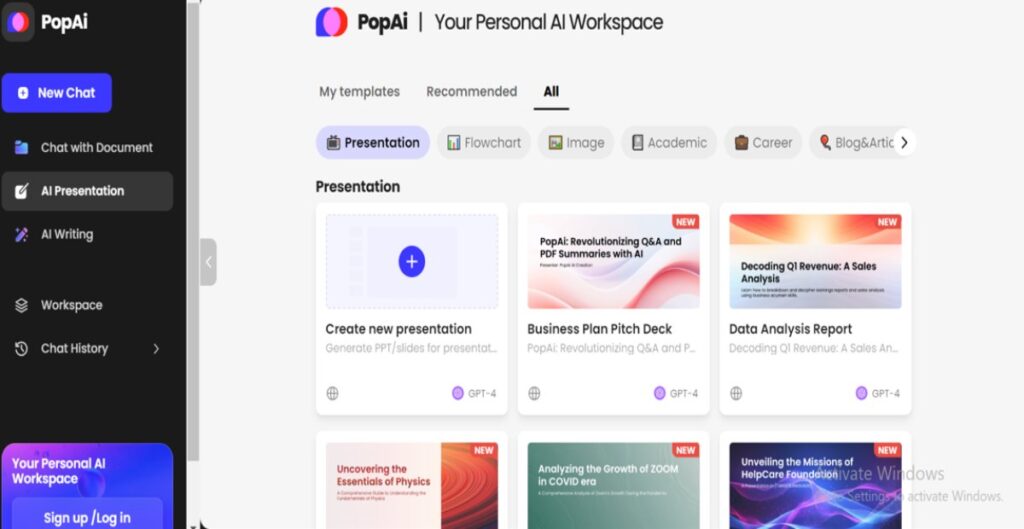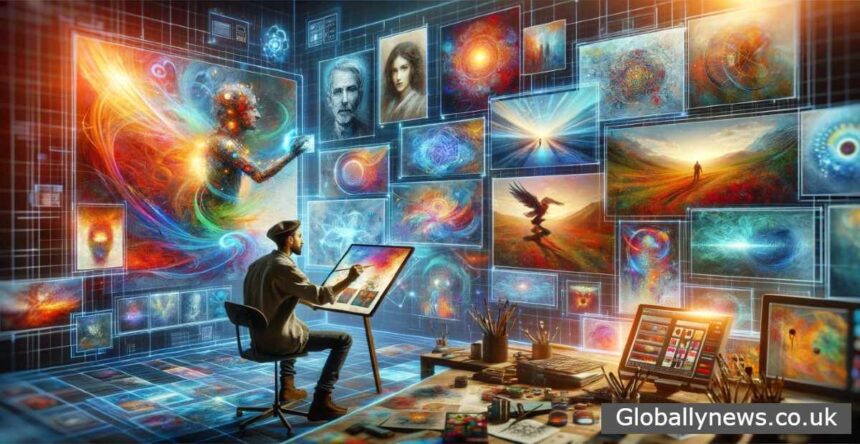Artificial intelligence in contemporary society has transformed many sectors through new technologies called AI image generators in the art and designing profession. These generators have revolutionized the possibilities of visual imagination providing people, especially artists, designers, and creative parties with tools to expand their creative horizons. Now it is time to discuss specifically how Popai.pro is changing the nature of visual creativity and how the major stakeholders, artists, perceive such changes.
Understanding AI Image Generators
AI image generators, therefore, are machine learning image creators that autonomously generate images given patterns and features of unseen data sets fed to the systems. These algorithms, often referred to as generative adversarial networks (GANs), consist of two main components: these two blocks which are usually the generator and the discriminator. The generator creates new pictures and the discriminator evaluates these new pictures on their authenticity, thus, an iterative process of the generator is observed.
Applications Across Industries
AI image generators have found diverse applications across various industries, each harnessing their capabilities in unique ways. AI image generators have found diverse applications across various industries likewise ai powerpoint presentation, each harnessing their capabilities in unique ways:
Art and Design: Artists hire AI image generators as an instrument of creativity, which allows them to create new compositions and ideas, versed in different styles, and excluded from the traditional repertoire of tools and practices.
Advertising and Marketing: Businesspeople use AI-produced images for developing inspiring advertisements, product concepts, and digital media suitable to the target clients and audiences for increasing brand awareness.
Gaming and Entertainment: AI image generators are used by game developers to create real and efficient environments, characters, and assets that make the video games and virtual simulations visually appealing and more real-world-like.
Fashion and Product Design: AI is applied in fashion and product designing where it helps the designers to simulate different designs and contrive new ideas before the creation of the product.

Ethical and Creative Considerations
While AI image generators offer immense creative potential, they also raise ethical and artistic considerations that require thoughtful exploration. While AI image generators offer immense creative potential, they also raise ethical and artistic considerations that require thoughtful exploration:
Ownership and Authorship: Concerns emerge whether generated art belongs to a producer of AI or some other person or a part of AI-generated art is a copyrighted object; there are issues concerning the ethical usage of AI to imitate artistic styles or ideas.
Bias and Representation: Bias can become embedded into the AI algorithms due to training data, which is still in constant development and may lead to issues regarding differing diversities in the imagery created across the artwork and socially.
HumanAI Collaboration: The combination of AI and art and design entails distancing from the conventional approaches to art and design and reconsidering the artist’s position as a co-creator with the machine.
Future Directions
Looking ahead, the future of AI image generators holds promise for further innovation and integration into diverse fields. Looking ahead, the future of AI image generators holds promise for further innovation and integration into diverse fields:
Augmented Reality (AR) and Virtual Reality (VR): By using AI-driven image generators it could improve augmented and virtual reality as well as increase the interactivity of the images, environment, and AI Narratives.
Medical Imaging and Scientific Visualization: Artificial intelligence operating the image generators could enhance the methods of producing medical images, help scientific visualization and data analysis in carrying out research, and also improve the precision of diagnostics.
Environmental and Architectural Design: AI can be applied to come up with concept designs, predict the impact of changes in the environment, and design the best sustainable urban structures to encourage creativity among architects and planners.
You Might Also Like:
- Face Swap AI: Revolutionizing Digital Content Creation with Vidnoz
- Enhancing Social Media Marketing with AI-Powered Video Tools
- The Role of AI in Enhancing Social Media Marketing Strategies
Conclusion
AI image generators are one of the greatest revolutions in the creation of visuals, which has initiated a new phase in the creative field to allow creativity in new horizons and to break the conventional frames. These tools allied with AI’s capabilities allow for creative invention, optimize design functions, and improve the process of visual narration across various spheres.
From these considerations, it is possible to draw the conclusion that with the development of technology, AI image generators contribute to the creation of new opportunities for further advancements, cooperation, and the dissemination of art. By accepting these tools properly and with care, a path to discovery and further development is created, becoming an enhancer of digital environments.
